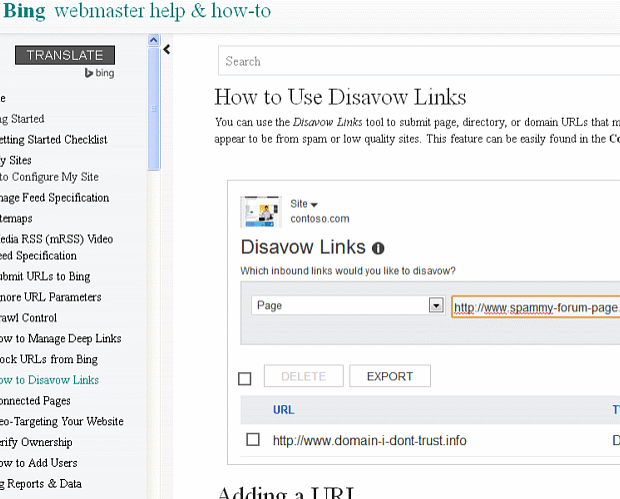All Backlinks are Not Good BacklinksJul52017

Using the Disavow Tool in Google and Bing
Do you know who’s linking to your site or Blog?
When is the last time your website had a Link Audit?
Last month?
Never?
It’s recommended that website owners periodically perform a backlink audit of their site, because there are Good Backlinks and Bad Backlinks … if you don’t know who’s linking “to” your website – then you may be setting up your website for low search results. If you’re inexperienced with a deep, manual link audit, then it’s best to have a professional perform one every six months, or at the least – annually.
What Exactly is a Backlink?
Backlinks are incoming links to a webpage.
Backlinks considered to be “Good” are defined as:
Good Backlinks are classified as Quality incoming links to your site from relevant domain sources with content similar to yours.
Backlinks considered to be “Bad” are defined as:
Bad backlinks are unnatural incoming links from un-trusted and unrelated sources to your site.
Google issues partial and site-wide Manual Penalties every day to websites with unnatural inbound links. Once a penalty is received from Google, it’s like trying to dig yourself out of quicksand – it can be a long and slow process to reach solid ground again.
When Should You Decide to Use the Disavow Tool?
- If you’ve received a Badlink Warning in your Google Search Console.
- If you’ve received a Manual Penalty from Google.
- If you’ve clearly identified intentional negative SEO directed toward your website.
- If you’ve noticed a sudden drop in search traffic on your site. (Most likely due to a Google algorithm penalty, Penguin, Panda, etc.)
Note: Google strongly advises against using the Disavow Links Tool unless it’s absolutely necessary, and it’s the only remaining option. Inappropriate use of the Disavow Tool can severely harm Google’s evaluation of your website and cause the rankings to shift, sometimes not in your favor. There’s no easy take-back once the “submit” button is clicked on Google’s Disavow Tool. Reversing a Disavow submission can takes weeks.
How Do You Remove Bad Backlinks?
Identify which links you want to remove.
Audit your website and one by one, check each website the inbound links are coming from. If the backlinks are from a site that's not relevant to your content, their content is duplicated, the backlinks are overly optimized anchor texts, the site is not indexed, or the backlink is from a Country which is not your focus group (if your business is located in Topeka, Kansas and inbound links are from Russia or the Netherlands - most likely unnatural links), then they need to be removed.
Query the contact details of the website owner.
Send off an Email to both the website owner and the webmaster requesting the link be removed.
- Make your request very polite and very precise.
- Make the location of the link you want removed crystal clear.
- If no reply received within 7 says, send one follow-up Email.
- If no reply, Disavow the backlinks.
How to Disavow Links in Google
(https://support.google.com/webmasters/answer/2648487?hl=en)
- Create a text file (.txt) containing the URL(s) of the links you want to disavow.
- Include only one link per line.
- To Disavow all links from a whole domain, add “domain:” before the link URL of the domain home page (for example, “domain:example.com”)
- You may include additional information about links in a line beginning with “#” (i.e. “# this webmaster won’t return my requests for removal”).
- Sign into Google Webmaster Tools, select the domain you’re removing links, Click the “Disavow Links” button.
- Click through the pop-up warning (Google warns against the dangers of improper Disavow use throughout the process) and upload the text file of links you want Google to ignore (Disavow) and click “Submit”.
You’re Text file will display the links you’ve submitted, Click “Done” to complete the process.

How to Disavow Links in Bing
(https://www.bing.com/webmaster/help/how-to-disavow-links-0c56a26f)
- Go to “Configure my site” in Bing Webmaster Tools and Select “Disavow links”.
- Use the Disavow Links tool to Select a page, directory or domain you wish to Disavow, and then enter the corresponding URL in the “Enter a URL” field.
- Click “Disavow”.
- The Disavow submission will be listed.
- You can delete Disavow submissions by checking the box to the left of the listed selection and clicking the “Delete” button.





